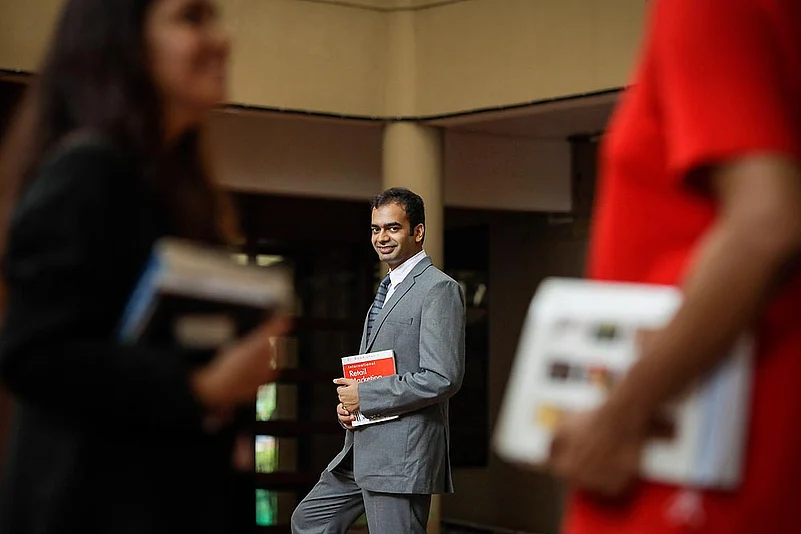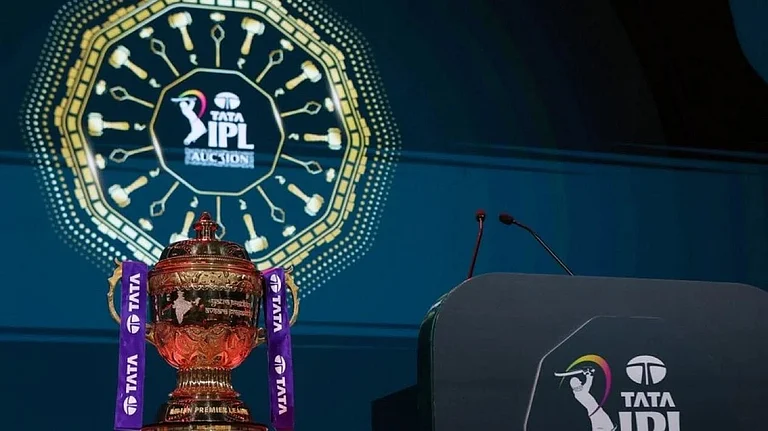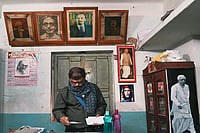For their summer internship this year, S.P. Jain Institute of Management and Welingkar Institute of Management in Mumbai did not send their students to blue chip corporates. They chose start-ups. B-schools across the country are waking up to this new phenomenon; it is also redefining the way they approach management education and teach their students.
The emergence of start-ups is increasingly showing up in B-school curricula, courses and discussions, case studies, internships and entrepreneurship development programmes. Increasingly, schools are devoting a large part of their time to understand how start-ups are the biggest thing that has happened in the Indian management landscape and how they need to reorient curricula to keep up with this emerging trend.
The start-up explosion is both B-schools’ biggest opportunity and their biggest challenge. Says Kaustubh Dhargalkar, associate dean, Welingkar Institute of Management, Mumbai, “All new business models are coming from the start-up space, who are finding new ways of creating money. We are bringing start-ups into our summer internships to push students into this volatile world.”
As start-ups take the business world by storm, are B-schools keeping pace in nurturing this spirit among students? Apparently not. Former IMI director Pritam Singh says, “Are B-schools creating wealth creators or careerists? The number of graduates from B-schools setting up start-ups is not that significant because most want to join the corporate sector while most start-ups come from people with technical backgrounds.”
Many students agree and cite the constraints for this. Gaurav Bangar, first year student at S.P. Jain, says, “Students have to take huge loans to get into B-schools and have to work four or five years to repay them. The emis start immediately after graduation. So this discourages entrepreneurship at B-schools.”

Starting a new culture Start-up groups at IIM Bangalore. (Photograph by Selvaprakash L.)
Most B-schools face a huge problem of quality faculty—not just in terms of qualified teachers but of those with relevant industry knowledge. Says Singh, “There is a crisis of leadership in B-schools. I am not sure we are getting the right kind of distinguished academics or just people with first -class degrees.” While top-tier IIMs have somewhat addressed this issue, the newer ones are as blighted by this as other first- and second-tier B-schools in India.
Another issue is that there is little awareness among Indian B-schools to obtain international accreditation, which necessitates and ensures a certain quality of faculty. The first B-school in India to have one was IIM Ahmedabad, and that too as late as in 2007, which shows how ignorant B-schools have been in this regard. Today few B-schools, including the new IIMs, have international accreditation and as such, do not have benchmarked quality of faculty.
If the quality of teachers is one end of the problem, at the other end is a bigger problem—of remaining relevant to the industry and its needs. Dhargalkar says, “At a philosophical level, things are changing so fast that no education is permanent in a conventional sense. Skill sets required today are different from what it was 10 years ago. Earlier classroom knowledge became obsolete in 30 years. Now it happens in a few months.”
Keeping the curriculum relevant and in tune with the industry’s needs is another race that most B-Schools have lagged behind in, as there is a tendency to copy curricula from international B-schools, often without proper relevance to Indian requirements. Says Uttam Kumar Sarkar, dean at IIM Calcutta, “Keeping the curriculum updated to satisfy the needs of the stakeholders, including students and recruiters, and delivering the content in a manner that best serves the purpose is a major challenge and will continue to remain so.” Obviously, B-schools need to invest heavily on research to finetune the content and delivery mechanisms.
Most students feel that what they learn in management school is irrelevant and that fresh learning has to begin in the industry. “Whatever we learn at B-schools has to be unlearnt when you land a job. That shows the disconnect between what they teach and what the industry wants,” Bangar says. It shows that very few B-schools do research about the problems faced by the industry. These industry needs have got a new meaning with the coming of start-ups, which have a totally new approach to management. Thus, they have different needs from management students, as the kind of inputs start-ups may require are different from other firms.

Case studying Students at a class in IFMR, Chittoor, Andhra Pradesh. (Photograph by R.A. Chandroo)
Former IIM Ahmedabad director and currently director-general of imi Delhi, Bakul Dholakia, says, “The fundamental question is to remain relevant in terms of imparting the education in accordance with the current needs of the industry. B-schools have to constantly upgrade and remain contextual and relevant. Unfortunately, barring the few top-ranking institutions, it is a problem with the rest.”
Like in the faculty issue, the IIMs have taken a lead here too and try to stay relevant to the industry’s needs, but they too need to do more vis-a-vis the start-up universe. In the ’80s and ’90s, a periodic review of curricula and programme was good enough but in today’s fast moving, start-up led management scenario, B-schools have to be on their toes all the time. Unfortunately, many of them fail to do so.
For years, the IIMs have relied on the case study method of management education, but despite this mode being tried, tested and globally followed, few other private B-schools are willing to toe that line. Says Dholakia, “The case study method will remain relevant as long as new and relevant cases are taken up, not old and outdated ones. In today’s context, it is important to take up case studies of start-ups who are redefining rules. More importantly, the case study orientation has to change and the method of teaching case studies and the role play has to change.”
Many students are also aware of the flaws in teaching. Bangar says, “We do not have enough case studies that are relevant to Indian business. We keep referring to case studies from Harvard Business School and other US schools which do not necessarily fit into Indian situations.”
The silver lining is that some private schools are trying to keep up by strengthening their industry connect by getting people from the industry, and encouraging industry intervention to properly groom their students. S.P. Jain, for instance, brings in people from the industry to teach with the mandate that they complete their PhD in 5 years, so as to have a unique combination of industry and academics in their faculty.
There is also the issue of walking that extra mile. While many B-schools acknowledge that mere classroom courses will not make better managers, few have been able to break out of the much-trodden mould. Some, of course, are taking the lead. S.P. Jain has started the Abhyudaya programme, under which students are sent to do internships with ngos to get a social orientation. They are also sent to rural areas where they mentor a slum child, which gives them early-stage experience in mentoring and working in unstructured problems and situations.
Vatsala Pant, a student of S.P. Jain Institute of Management, says, “It is important to expose students to outside environment. These programmes expose us to ground realities, in dealing with individuals in real life and unstructured situations. In future, a lot of demand will come from the rural areas and new situations. This will help students differentiate between India and Bharat.” B-schools also need to pro-actively reach out to corporate India to find out their pain points and bring them to classrooms.
It goes without saying that today’s management student is much smarter and choosy and is not ready to accept anything less than good quality. That is why so many B-schools have no takers, including some of the new IIMs. The total aicte-approved intake in India’s 3,400 B-schools is of about 3 lakh, but barring the two lakh that take CAT for the IIMs, the remaining exams, including MAT, XAT and CMAT together account for just another 40,000-50,000 aspirants.
A large number of seats have no takers. The lack of quality shows up in the placement from these B-Schools as well. While the top 50 schools have a clean placement record and can place 90-100 per cent students, the percentage drops drastically as one goes down the hierarchy. Lower down the order, B-schools struggle to place even 20 per cent of their students. Ranjan Banerjee, dean, S.P. Jain Institute, says, “Students are more impatient. They are aware and technology savvy, so their requirement is different. The conventional chalk and talk ways of teaching will be grossly inadequate and there has to be proper quality in faculty and teaching.”
With start-ups the new way of life, the industry is turning a new leaf in its history. B-schools have to seriously reorient themselves to not just keep pace but also to remain relevant. It is a tall task and a test that will ensure that only the serious and capable ones will remain in the race.





















